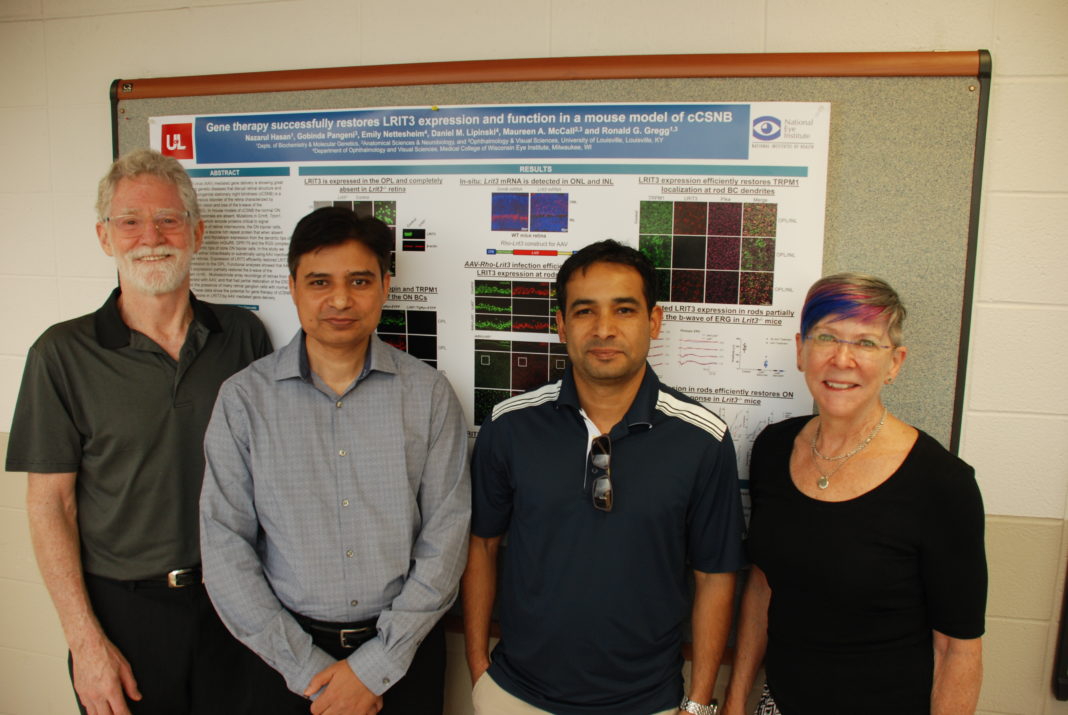
LOUISVILLE, Ky. – By isolating where a key protein required for low light vision is expressed, scientists have shown that gene therapy may restore visual function for people with a form of congenital stationary night blindness.
In mice models with genetic mutations similar to humans with night blindness, scientists used adeno-associated viruses to reintroduce the protein into cells in the retina, the specialized tissue at the back of the eye that detects light and triggers impulses through the optic nerve to the brain, where a visual image is formed.
The research, led by scientists at the University of Louisville with collaborators from the Medical College of Wisconsin, recently was published by Cell Reports. Grants from the National Institutes of Health, Research to Prevent Blindness and the Foundation Fighting Blindness funded the research.
“Individual genes that everybody expresses are critical to making sure vision works correctly, and in their absence, some people will have night blindness,” said Ron Gregg, Ph.D., professor and chair of the Department of Biochemistry and Molecular Genetics at the UofL School of Medicine. “Our research shows that if you replace the missing protein using a gene therapy approach, you can restore visual function.”
Humans are adept at seeing in low light, but genetic mutations can disrupt that ability, causing total night blindness.
Proteins located on the surface of photoreceptors, which are cells in the retina that detect light, ensure that visual signals pass from the two types of photoreceptors – cones and rods – to retinal bipolar cells. This is a crucial step in the transmission of visual information from the eyes to the brain. Genetic mutations disrupt the signal transfer between photoreceptors and retinal bipolar cells, impairing vision.
People with congenital stationary night blindness also have other vision problems, including severe myopia, involuntary eye movements and eyes that do not look in the same direction. These secondary affects are more debilitating than night blindness itself, Gregg said.
The next phase of research requires testing on a large animal model with eyes similar to humans.
#WeAreUofL
























